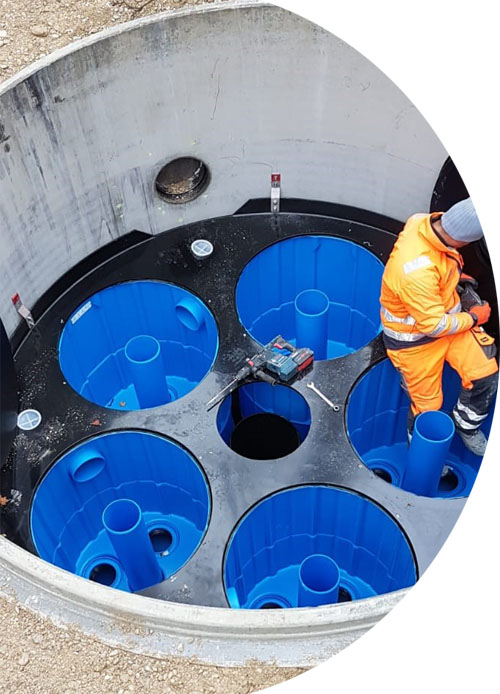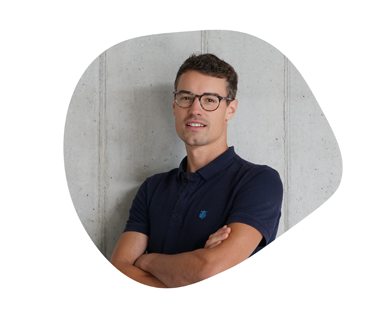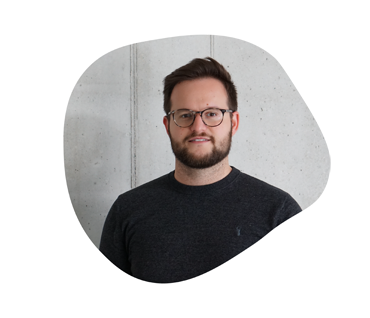REFERENCES
FOR THE PROTECTION OF OUR WATERS

REFERENCE MULTIPLE UNIT 1,000
MUNICH
EXTENSION AND MODERNIZATION OF THE
MUNICH CLINIC BOGENHAUSEN
The modernization of the Munich Clinic in Bogenhausen and the construction of an extension will provide the already largest hospital of the Munich Clinic with a state-of-the-art operating theatre and over 1000 beds in the future. As part of the refurbishment, the drainage of the rainwater was also redesigned. Around 3,400 m² of sealed and in some cases heavily contaminated traffic areas need to be cleaned.
This area includes the helipad, among other things. A further 4,000 m² of roof area must also undergo pre-treatment before all of the rainwater is returned to the groundwater and thus the natural water cycle via infiltration trenches. The high hydraulic and cleaning requirements that arise with such areas always result in a demanding planning basis. The challenge was to find a suitable rainwater treatment system that would satisfy all parties involved in the project.
As the existing subsoil consists largely of Isar gravel, it was unclear for a long time before the start of the project whether the concrete shafts for the treatment plants could be installed as standard. So-called sinking shafts came into question, which are inserted into the subsoil piece by piece without the surrounding soil being able to slip. The 3P Hydrosystem was therefore quickly chosen by the planner to find a suitable treatment system. This system is unique in that the actual filter unit can be easily inserted into the shaft already installed in the ground. In terms of drainage technology, the areas were divided into a five-way and a twin hydrosystem. The hydrosystem combines sedimentation processes with a filter stage. The rainwater is cleaned by sedimentation, adsorption, filtration and chemical precipitation. A hydrodynamic separator causes the sedimentation of solids in a radial flow regime characterized by secondary flows. The effect of the separator causes the solids to enter the flow-calmed sludge trap located below the separator hopper. The 4 filter elements are located above the separator chamber.
The treatment capacity is designed to ensure that the requirements of M 153, DWA-A 102 and the NRW separation decree are reliably met. A Hydroshark DN 1,500 sedimentation system was also used as pre-treatment for less polluted areas. Here too, the entire filter unit was placed and installed in the concrete shaft on site.
YOU NEED PROFESSIONAL
SUPPORT OR
HAVE QUESTIONS FOR US?

Jonas Bitterling, M. Eng.
Project Engineer
Tel +49 (0) 7334 92460-12
Mail bitterling@3ptechnik.de

Daniel Betschner,
Master Professional of
Technical Management (CCI)
Project Engineer
Tel +49 (0) 7334 92460-32
Mail betschner@3ptechnik.de
